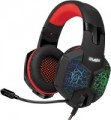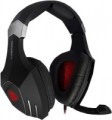Plug
The design of the plug provided in the headphones. This parameter is relevant primarily for models with a mini-Jack interface (see "Connection") — the rest of the plugs are made straight in most cases, exceptions are extremely rare.
—
Direct. The traditional, most simple and unpretentious option is plugs that do not have any bends. Usually, they are compatible without restrictions with stationary audio equipment, PCs, laptops, etc. But for smartphones and other portable gadgets, this option is not always optimal — it all depends on how the gadget is located in your pocket or case. In some cases — for example, when carrying a smartphone in a regular pants pocket — such a wire can be strongly bent around the plug, which quickly becomes unusable; in such cases it is worth paying attention to L-shaped or curved plugs (see below).
—
L-shaped. Plugs angled at 90° in the shape of the letter L. Designed primarily for use with smartphones and other handheld devices: such devices, when worn, can be positioned in such a way that a bent plug is more convenient than a straight one. However, the L-shaped design may also be the best choice for stationary equipment, where the headphone wire approaches the connector at a right angle — for example, this situation is often found in computers and laptops.
—
At an angle of 45°. A variation of the L-shaped plug
...described above, bent not at a straight line, but at a smaller angle (not necessarily exactly 45 °). It is also designed primarily for pocket equipment, and with such an application, such plugs are considered even more convenient and reliable than traditional L-shaped ones. But for stationary devices, it hardly makes sense to specifically look for a model with a similar connector (although such an application is technically quite possible).Cable length
The length of the cable supplied with the headphones with the appropriate connectivity.
The optimal cable length depends on the planned format of the "ears". So, for pocket gadgets,
1 metre or less is often enough, for a computer it is already desirable to have a wire for
1 – 2 m, and preferably
2 – 3 m. And models with a longer cable length —
3 – 5 m or even
more — are mainly designed for specific tasks, such as connecting to a TV or using in recording studios.
Recall that in some models the cable is removable (see below) and can be replaced if necessary with a longer or shorter one. Also note that there are extension cables that allow you to increase the length of the main wire; such a cable may even be included in the delivery, this point (and the length of the additional cable) is usually specified in the notes.
Impedance
Impedance refers to the headphone's nominal resistance to AC current, such as an audio signal.
Other things being equal, a higher impedance reduces distortion, but requires a more powerful amplifier — otherwise the headphones simply will not be able to produce sufficient volume. Thus, the choice of resistance depends primarily on which signal source you plan to connect the "ears". So, for a portable gadget (smartphone, pocket player), an indicator of
16 ohms or less is considered optimal,
17 – 32 ohms is not bad. Higher values —
33 – 64 ohms and
65 – 96 ohms — will require quite powerful amplifiers, like those used in computers and televisions. And models with a resistance of
96 – 250 ohms and
above are designed mainly for Hi-End audio equipment and professional use; for such cases, detailed recommendations for selection can be found in special sources.
Sensitivity
Rated headphone sensitivity. Technically, this is the volume at which they sound when a certain standard signal from the amplifier is connected to them. Thus, sensitivity is one of the parameters that determine the overall volume of the headphones: the higher it is, the louder the sound will be with the same input signal level and other things being equal. However, we must not forget that the volume level also depends on the resistance (impedance, see above); moreover, it is worth choosing “ears” for a specific device first by impedance, and only then by sensitivity. In this case, one parameter can be compensated for by another: for example, a model with high resistance and high sensitivity can work even on a relatively weak amplifier.
As for specific figures, headphones with indicators of 100 dB or less are designed mainly for use in a quiet environment (in some similar models, the sensitivity
does not exceed 90 dB). For use on the street, in transport and other similar conditions, it is desirable to have more sensitive headphones — about
101 – 105 dB, or even
110 dB. And in some models, this figure can reach
116 – 120 dB. and even
more.
It is also worth noting that this parameter is relevant only for a wired connection according to the analogue standard — for example, via a 3.5 mm mini-
...jack. When using digital interfaces like USB and wireless channels like Bluetooth, the sound is processed in the built-in headphone converter, and if you plan to mainly use this kind of application, you can not pay much attention to sensitivity.Frequency range
The range of audio frequencies that the headphone's own microphone can normally "hear".
Theoretically, the wider this range, the more advanced and high-quality the microphone is, the closer the sound transmitted by it is to the real one. In fact, extensive frequency coverage is not always required. So, the working range of the human ear is about 16 – 22,000 Hz, and even then not everyone hears its upper part. And human speech usually covers frequencies from 500 Hz to 2 kHz, at least this range is considered quite sufficient for its transmission. So if you need a microphone for simple tasks like voice communication on the Internet or game chat, you can not pay much attention to the frequency range: even in the most modest models, it is more than sufficient for normal speech transmission.
Sensitivity
The sensitivity of the headphone's own microphone.
The more sensitive the microphone, the higher the signal level from it, at the same sound volume, and the better this model is suitable for picking up quiet sounds. Conversely, low sensitivity filters out background noise. At the same time, we note that these nuances are important mainly in professional work with sound. And for simple tasks like voice communication over the phone or via the Internet, sensitivity does not really matter: in headphones of this specialization, it is selected in such a way as to ensure that the microphone is guaranteed to work.
Microphone noise canceling
The presence of a noise reduction system in its own headphone microphone.
In accordance with the name, such a system is designed to eliminate extraneous noise - primarily during conversations. It is usually based on an electronic filter that passes the sound of a human voice and cuts off background sounds such as city noise, the rumble of wind in the microphone grille, etc. As a result, even in noisy environments, thanks to the
noise reduction of the microphone, speech is clear and intelligible; True, the system inevitably introduces distortions into the final sound, but they are not critical in this case.
— ENC. ENC (Environment Noise Cancellation) technology significantly reduces ambient noise with directional microphones. It is used both in gaming devices so that gamers can easily communicate in voice chat, and in TWS earphone models so that you can comfortably talk on the phone in a noisy environment.
— cVc. Microphone noise reduction cVc (Clear Voice Capture) is an advanced technology that is found mainly in expensive headphone models. cVc algorithms effectively suppress echo and noise from the environment. Sound processing using this technology is carried out at several levels at once - the algorithm determines the reference signal-to-noise level, automatically adjusts speech to the desired volume level, applies adaptive equalizers to process the entire voice, as well as specialized filters to remove
...low-frequency bubbling, sibilants and hissing.Flexible design
This feature usually means that the microphone is attached to the headphones using a special flexible arm.
The flexible design gives additional possibilities for moving the microphone relative to the user's mouth and makes it easier to choose the optimal position that provides the best sound quality.
Vibration
The presence of a vibration system in the design of the headphones.
The meaning and purpose of this function depends on the design and specialization of the "ears". One of the most common types
of vibration headphones are gaming models (see "Intended use"), made in a full-size Over Ear format (see "Design"). Vibration motors installed in each cup of these headphones are triggered by certain game events (explosions, shots, etc.) — due to this, sound fidelity is improved and an enhanced immersion effect is provided. Another type of vibration headphones are wireless neck-mounted models (see "Design"), usually in-ear (see ibid.). In them, the vibration motor is installed in the mount and is used for additional notifications — for example, alerts about an incoming call or SMS.

